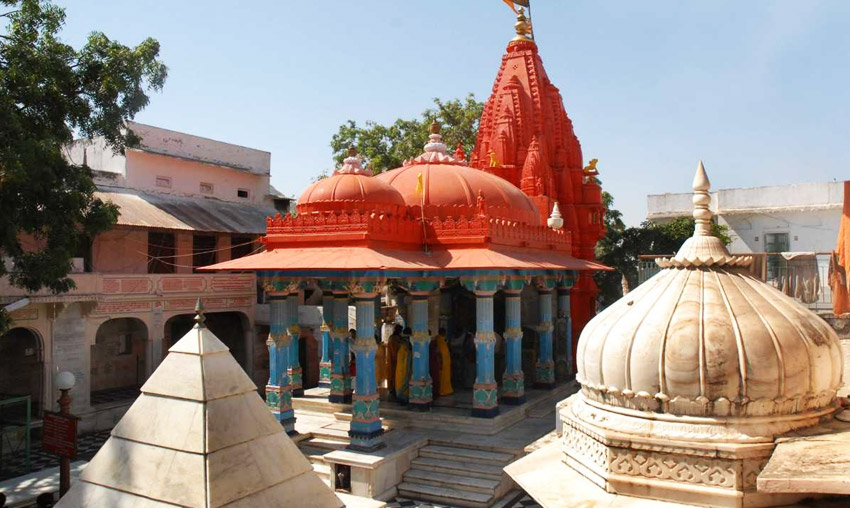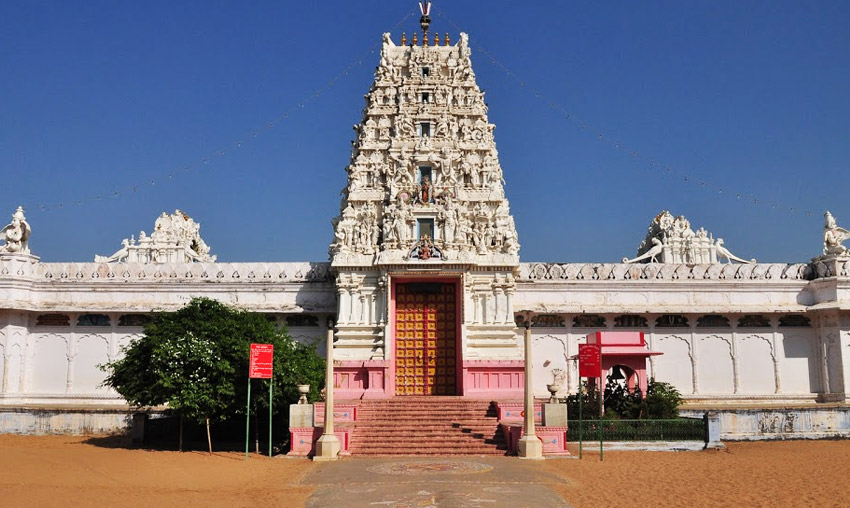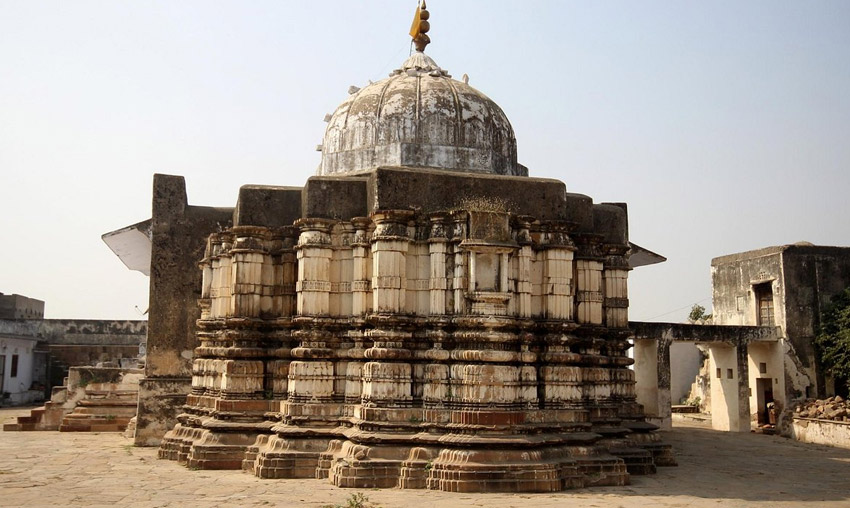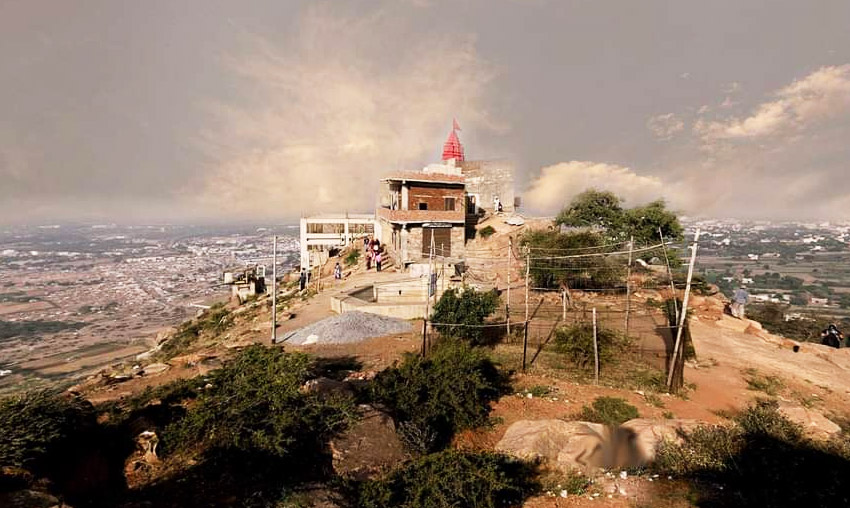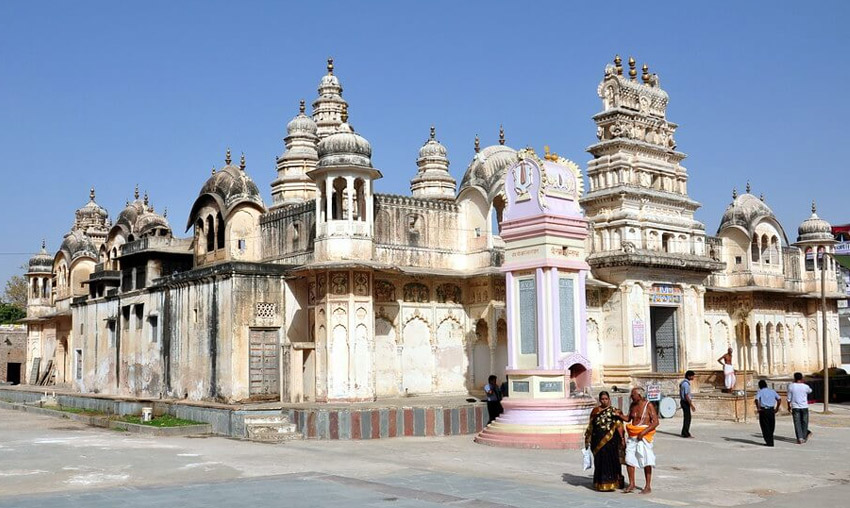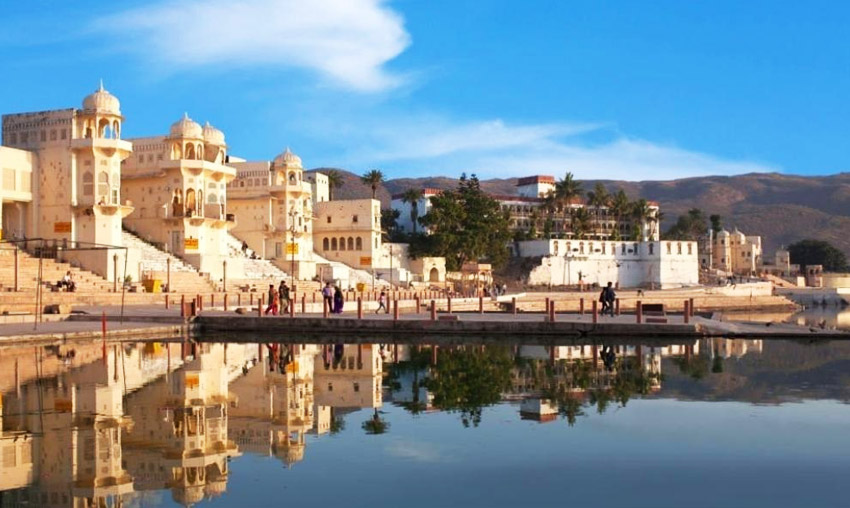Brahma Temple, Pushkar Timing, History, aarti & How to reach
The Brahma Temple, also called the Jagatpita Brahma Mandir, is a well-known Hindu temple located in Pushkar, Rajasthan. Being one of the few temples devoted to Lord Brahma, the Hindu god of creation, it is regarded as rare. The city of Ajmer is 15 kilometers from Pushkar, which is situated in the Aravalli Hills.
The temple hosts the colorful and devout Pushkar Camel Fair every year and is situated on the shores of the holy Pushkar Lake. It is thought that the fabled Sage Vishwamitra constructed both the temple and the deity.
It is estimated that the Brahma Temple in Pushkar is roughly two millennia old. It is part of the “Rose Garden of Rajasthan,” along with the revered Pushkar Lake. From temples and markets to lakes and historical sites, the town is renowned for its typical Rajasthani scenes and atmosphere.
History of Brahma Temple, Pushkar
More than 500 temples, including 80 large temples and numerous shrines (reconstructed from those destroyed during the reign of Mughal emperor Aurangzeb), can be found in Pushkar. The 14th century saw the construction of the central Brahma temple’s “garbagriha,” which is composed of slabs of stone and marble. The fabled Sage Vishwamitra is credited with constructing the building. The current structure was altered by Maharaja Jawat Raj of Ratlam, and Adi Shankara renovated it.
The temple’s striking Hansa (swan) motif is painted on a red shikhara, or tapering temple top. One of the five holy pilgrimage sites for Hindus, Pushkar Lake and the Brahma Temple rank among the top ten most sacred places in the world.
Deity of Brahma Temple, Pushkar
According to Hindu mythology, Lord Brahma is the creator of the universe, and he is honored at the Brahma Temple in Pushkar. In the Hindu pantheon, Brahma is one of the three members of the Holy Trinity, which also includes Shiva, the destroyer, and Vishnu, the preserver.
The Brahma idol in the temple is composed of marble. It shows the deity sitting cross-legged with four heads, which represent the four Vedas. The Goddess of the Vedas, Gayatri, his consort, is also depicted in the idol.
Best Time to Visit Brahma Temple, Pushkar
The winter months of November through February are the best times to visit Brahma Temple because of the pleasant weather that is perfect for sightseeing. It’s an exciting time to visit because the Pushkar Camel Fair also takes place during this time.
Avoid Pushkar at all costs because of its scorching summers, which frequently reach temperatures above 40°C. Although there is moderate rainfall during the July–September monsoon season, the town is still less crowded and provides a tranquil experience.
Darshan Timings at Brahma Temple, Pushkar
Understanding the Brahma Temple’s darshan timings enables you to take in the spiritual atmosphere of the temple during its holiest times. The temple’s schedule gives guests several chances to seek blessings and take part in aartis, darshans, etc.
| Darshan Type | Morning Timings | Evening Timings |
| General Darshan | 5:30 AM–1:30 PM | 3:00 PM–9:00 PM |
| Mangal Aarti | Before Sunrise | 5:30 AM–6:00 AM |
| Sandhya Aarti | After Sunset | 6:30 PM–7:30 PM |
| Special Pujas | 7:00 AM–9:00 AM | 7:00 PM–8:00 PM |
Brahma Temple, Pushkar: Dresscode
Respecting the sanctity of the temple and its traditions is crucial, even though there isn’t a dress code for visitors to the Brahma Temple in Pushkar. The following advice will help you respect the dress code and have a comfortable visit:
Wear a traditional outfit: When visiting the Brahma Temple, it is recommended to dress in traditional Indian garb. Women can opt for sarees or salwar kameez, while men can wear kurta-pajamas or dhotis.
Steer clear of Western attire: Any Western attire may not be suitable for an Indian place of worship.
Take off your shoes: Before entering the temple grounds, it is customary to take off your shoes. They can be kept in places that are designated close to the entrance.
Brahma Temple, Pushkar: Entry Fees and Pooja Charges
The Brahma Temple welcomes pilgrims and visitors—offering various rituals and poojas. Here’s a detailed breakdown of the costs:
Entry Fees:
- General Entry: Free for all.
- VIP Entry: Specific fees may be applicable for quicker access or special services.
Pooja Charges:
- Mangala Aarti: A morning ritual, costing approximately INR 100.
- Sandhya Aarti: An evening ritual, costing approximately INR 100.
- Abhishekam: Ceremonial bathing of the deity, costing approximately INR 200.
- Brahma Havan: Fire ritual dedicated to Lord Brahma, costing approximately INR 500.
- Shodashopachara: Ritual involving sixteen steps, costing approximately INR 300.
- Annadanam: Free food distribution, promoting charity and community welfare. Donations are voluntary.
- Prasadam Distribution: No specific charge; voluntary donations are encouraged.
Please note that these costs are approximate and may vary over time. Confirm the current charges before your visit to ensure a seamless experience.
Festivals at Brahma Temple, Pushkar
The Brahma Temple is a popular hub for festivals, attracting pilgrims and visitors from around the globe. Infusing the temple town with culture, devotion, and tradition, these celebrations include:
- Kartik Purnima: Celebrated during the full moon night of Kartik, the festival marks Lord Brahma performing a yajna at Pushkar. Pilgrims take a holy dip in Pushkar Lake and offer prayers at the temple.
- Navratri: The nine-night festival dedicated to Goddess Durga. The devotional festivities are also accompanied by cultural programs.
- Diwali: Diwali, the festival of lights, is celebrated here as lavishly as the rest of India. Devotees light lamps, perform special poojas, and participate in cultural programs.
- Holi (March): Rajasthani Holis are legendary and, resultantly, the festival of colors at Pushkar is celebrated on a grand scale. Devotees play with colors and participate in special rituals.
- Makar Sankranti (14th January): Celebrated with kite flying and special rituals, the Makar Sankranti festival marks the sun’s transition into the Tropic of Capricorn.
The opportunity to observe the diverse fabric of Indian spirituality and culture is provided by these festivals. In addition to offering fantastic photo walks and street food, visiting the Brahma Temple during these festivals offers a distinctive and lively experience that captures Rajasthan’s rich cultural heritage.
Places to Visit Near Brahma Temple, Pushkar
You can improve your trip by exploring Pushkar’s surroundings, which will give you a better understanding of Rajasthan’s rich cultural and historical heritage. The following are a few places to visit in Pushkar close to Brahma Temple in Pushkar:
Pushkar Lake
52 ghats (stone staircases) encircle Pushkar Lake, which is regarded as one of India’s holiest lakes. Believed to atone for sins and bring good fortune, pilgrims bathe in the lake. A center of activity during the Pushkar Camel Fair is the lake. A cultural extravaganza, this camel-trading festival takes place every year. Tourists and devotees alike come to the festival to take in camel races, folk music and dance performances, and other events. The fair’s handicraft, textile, and jewelry stores draw crowds of people as well.
